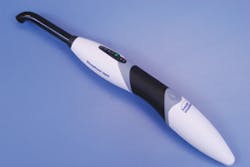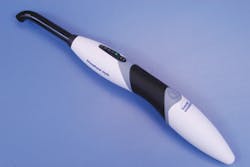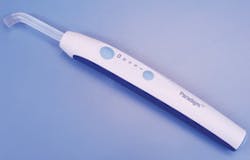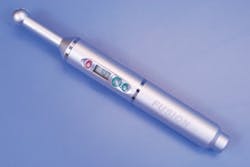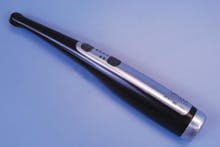Ask Dr. Christensen
Gordon J. Christensen, DDS, MSD, PhD
In this monthly feature, Dr. Gordon Christensen addresses the most frequently asked questions from Dental Economics® readers. If you would like to submit a question to Dr. Christensen, please send an email to [email protected].
Are “bulk-fill” composite restorations working?
Q
I’m seeing many companies advertising so-called bulk-fill composite materials. The idea sounds like a good one, but I’m concerned about several aspects of this concept. Is there more shrinkage when the entire restoration is cured at one time? Will my curing light reach the depth of the box form? Are contact areas adequate when the major quantity of resin is placed at one time? These are a few of the questions that I have about the concept. Am I too concerned?
A
Your questions are critical to the success of resin-based composite restorations, and there are state-of-the-art answers to them. However, these restorations need to be observed over a long period of time for final conclusions.
I will provide my response to you in the following order:
- History of the bulk-fill concept
- The capability of curing composite deeply with current lights
- Capability of current curing lights to cure deeply
- The most predictable resin placement and curing technique
- My opinions relative to bulk-filling of restorations
History
Bulk-filling composite is not a new idea. This concept has been promoted for many years. Filling tooth preparations all at once instead of by increments makes sense, since it may save time and make the procedure easier. But is it adequate, the same as, or better than placing and curing resin in increments?
Some of the products that are now being promoted as bulk-fill resins were placed on the market many years ago. Some of them were not promoted as bulk-fill when they were introduced, but they are now being represented as such. They have been reintroduced as “new” products. Other products are, in fact, new to the market. The bulk-fill concept has come and gone a few times in the last several decades.
The capability of curing composite deeply with current lights
Our research group, Clinicians Report (previously called CRA), has studied most of the current brands of resin-based composite relative to their ability to be cured deeply with commonly used curing lights. Some of the resins are capable of curing deeply and others are not, even with optimum conditions and potent lights.
Assuming an optimum curing light emits about 1,000 milliwatts per centimeter squared, let’s look at the commonly observed depth of cure of a typical A2 color resin. A2 color resin is by far the most used color in the U.S.
When such a curing light is used on a typical popular restorative resin, such as 3M ESPE Filtek Supreme Ultra or Kerr Herculite Ultra for typical curing times, these resins cure about 2 mm deep on a routine basis. Some resins, such as Dentsply Caulk SureFil SDR, cure up to 4 mm. However, that product should be used primarily as an internal “filler” to be covered with a layer of external fully filled resin.
The capability of current curing lights to cure deeply
The challenge to cure deeply for bulk filling is the most important and problematic challenge at this time. Studies regarding the status of the curing lights used by most general dentists are not impressive. A study of 214 lights in Toronto showed that the typical curing lights tested delivered about 512mW/cm2, and about 12% of the lights tested delivered less than 300mW/cm2.
I see several challenges with light curing:
• Many dentists have old or worn out lights that do not deliver optimum light energy. I highly recommend that practitioners who haven’t recently upgraded their current lights look into upgrading soon. Current examples as tested and proven by Clinicians Report are Bluephase from Ivoclar Vivadent, Fusion 3.0 from DentLight, Paradigm LED curing light from 3M ESPE, and VALO Cordless from Ultradent. (Figs. 1-4) There are many others, so get a new light!
• Most light guides that dentists use have resin debris on them that redirects the light and compromises the energy delivered to the restoration. Clean the tip of your light guide by chipping the debris off the light guide with a sharp scalpel and polishing the surface with progressively finer composite finishing disks. Debride and polish your light guide.
• Many light guides will not allow curing some clinical situations at an angle perpendicular to the surface of the resin. Some of the newer lights have light guides that emit the light from the curing device at up to 90 degrees from the source of the light. Get a new light!
• Clinicians Report studies showed that fast curing lights (three- to five-second cure) do not penetrate as deeply as slow curing lights. This finding does not depreciate the value of fast curing lights, since they significantly decrease the time to place composite resin and, therefore, save considerable money. Many curing lights used by practicing dentists are NOT capable of curing deeply.
The most predictable resin placement and curing technique
Observation of the current status of curing lights and use of light-curing resins in American dentistry leads me to the following conclusion. Unless you are using the most optimum light, curing for the most optimum time, and curing perpendicular to the surface of the resin, you are probably not producing optimum curing of restorative material depths much deeper than 2 mm. Therefore, average curing techniques used today may not cure deeply.
My personal opinions relative to bulk filling of resin restorations
I am not a proponent of bulk filling for most dentists at this time for the following reasons:
- Average Class II box forms are about 7 mm deep, and some are considerably deeper. Few resins can be cured that deeply at one time.
- The current curing lights used by most dentists are not operating at optimum efficiency, which reduces optimum curing potential.
- Most light guides do not emit light at near 90 degrees from the light emission source, reducing the ability to cure deeply in many situations, such as the lingual of anterior teeth, facial or lingual of posterior teeth, Class II box forms on the distal of many posterior teeth, and other locations.
- Curing in bulk produces more cumulative shrinkage than curing in several small increments.
- Making adequate contact areas using the bulk-filling concept can be difficult in certain situations.
- Class II resin-based composite restorations do not have an admirable longevity as reported in the research literature. I feel strongly that inadequate curing is one of the major reasons for the premature failure of Class II resins.
A summary of my answer
You’re right to question the bulk-cure resin technique. Do not be concerned about your anxiety. If you want to use the bulk-fill technique, observe and experiment with its challenges. Bulk-fill can work well using the proper instruments, the deepest curing materials, and proper techniques. However, there are numerous potential complications. You must determine if this technique is better for you and your patients than the technique you’re now using. You may see our research on the bulk-fill concept by going to www.cliniciansreport.org and reading the monthly issue of Clinicians Report on this subject.
References available upon request.
Gordon Christensen, DDS, MSD, PhD, is a practicing prosthodontist in Provo, Utah. He is the founder and director of Practical Clinical Courses, an international continuing-education organization initiated in 1981 for dental professionals. Dr. Christensen is a cofounder (with his wife, Dr. Rella Christensen) and CEO of CLINICIANS REPORT (formerly Clinical Research Associates).
ADDITIONAL EDUCATIONAL RESOURCES
on this subject from our organization are:
VIDEO 3554
“Class II Composite Resins Can Be Predictable, Nonsensitive, and Profitable.”
This is a one-hour video that shows Dr. Christensen using the most up-to-date Class II materials and techniques for Class II resins.
VIDEO 4757
“Dr. Christensen’s Clinical Failures and How to Avoid Them,” 2ND Edition.
This video shows about 90 clinical concepts Gordon will avoid doing again.
Past DE Issues
